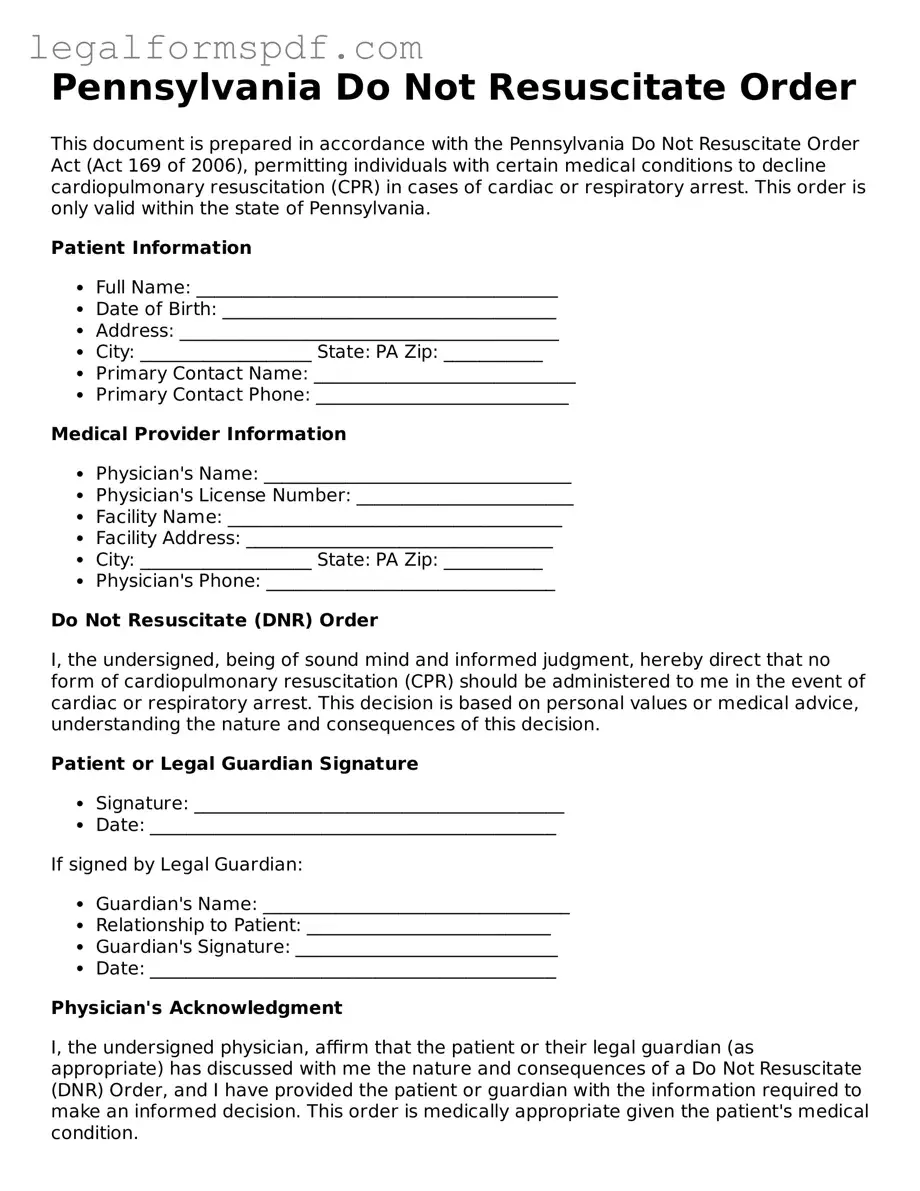What is a Pennsylvania Do Not Resuscitate (DNR) Order?
A DNR Order in Pennsylvania is a medical directive that instructs health care providers not to perform cardiopulmonary resuscitation (CPR) if a patient's breathing stops or if the patient's heart stops beating. It is a decision made by the patient or the patient's legally recognized health care decision-maker, based on the patient's wishes and medical advice.
Who can request a DNR Order in Pennsylvania?
Adult patients with a terminal condition, where death is imminent, or those who are in a state of permanent unconsciousness, can request a DNR Order. The request can also be made by a health care agent designated by the patient in a legally valid health care power of attorney, or by a family member or other legal representative if the patient is unable to communicate their own wishes.
How can one obtain a DNR Order in Pennsylvania?
To obtain a DNR Order, a discussion must first take place between the patient (or the patient's representative) and a licensed Pennsylvania physician, nurse practitioner, or physician assistant. This health care professional must agree that the DNR Order is appropriate considering the patient's medical condition and wishes. Following this, the DNR form needs to be completed and signed by the appropriate parties.
Where does a DNR Order apply?
In Pennsylvania, a DNR Order is valid in all health care settings, including hospitals, nursing homes, and in the patient's home. It is also respected by emergency medical services (EMS) personnel during transport or outside of a health care setting.
Can a DNR Order be revoked or changed?
Yes, a DNR Order can be revoked or changed at any time by the patient or the patient's legally recognized health care decision-maker. This can be done by communicating the decision to revoke or change the order verbally or in writing to a health care provider. It is important to also destroy the physical DNR order form to avoid confusion.
Is a DNR Order the same as a living will?
No, a DNR Order is not the same as a living will. A DNR Order specifically instructs health care providers not to perform CPR if a patient's breathing or heartbeat stops. A living will, on the other hand, is a broader legal document that outlines a person's wishes regarding various types of medical treatments and interventions in the event they are unable to communicate these wishes themselves.
What should be done with a completed DNR Order?
Once a DNR Order is completed and signed, it should be placed in a prominent location where it can be easily found by family members and health care providers. Additionally, family members, health care agents, and local EMS providers should be informed of the existence and location of the DNR Order. Keeping a copy with personal records and even carrying a wallet card indicating DNR status are also recommended practices.
